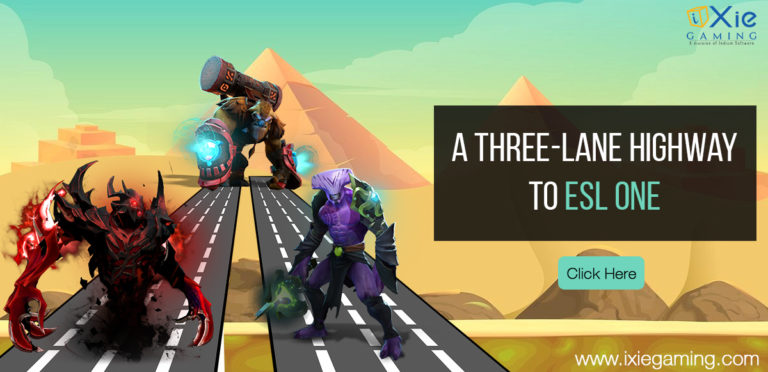With the rise of the gaming industry and the increasing popularity of PC gaming, many developers are jumping into the field. However, game development is a complex process that requires careful planning and execution to achieve success. Whether you are an aspiring game developer or an experienced one, understanding the do’s and don’ts of PC game development is crucial to creating a successful game. This piece aims to furnish you with a comprehensive guide on the essential things to do and avoid during the PC game development process.
As a developer, you need to be aware of the unique challenges that come with PC game development. From optimizing your game for different hardware configurations to choosing the right game engine, there are many considerations to keep in mind. By following the do’s and avoiding the don’ts, you can ensure that your game stands out in the competitive PC gaming market.
In this guide, we will cover a range of topics, including best practices for game design, effective marketing strategies, and tips for optimizing game performance. By the end of this article, you will have a better understanding of what it takes to create a successful PC game that resonates with gamers worldwide.
So, whether you are a seasoned game developer looking to improve your skills or a novice just starting out in the field, this guide has something to offer. Let’s dive in and explore the do’s and don’ts of PC game development together.
Do’s
1. Plan Your Game Thoroughly Before Starting the Development
To create a successful game, start with a clear vision. Think about the genre, setting, target audience, and gameplay mechanics. Make a detailed game design document that outlines everything about your game, including the story, characters, and levels. Having a clear plan will help you stay organized and focused throughout the development process. It will also help you communicate your ideas effectively to your team and stakeholders. By putting in the effort to create a solid game design document, you’ll be setting yourself up for a better chance of success.
2. Focus on Creating an Engaging Gameplay Experience
Another key to success is prioritizing gameplay above everything else. Create intuitive, fun, and rewarding mechanics that are balanced and challenging enough to keep players engaged. Remember that player enjoyment is the key to success. Test the game extensively to ensure the mechanics work well, and make changes where necessary. It’s also important to listen to player feedback and make improvements based on it. By keeping gameplay as your top priority and listening to your players, you can increase the chances of creating a successful game.
3. Test Your Game Extensively and Frequently
Regular testing is vital in game development to detect bugs and other problems early. It involves both internal testing with your team and external testing with beta testers and focus groups. By listening to player feedback, you can identify areas that need improvement and make the necessary changes. Testing not only helps to improve the quality of your game but also enhances the player’s overall experience. Therefore, prioritize game QA throughout the development process to ensure a successful and enjoyable game for your players.
4. Listen to Player Feedback and Make Necessary Changes
Your players are the ones who will ultimately buy and play your game, so it’s crucial to value their feedback. Take note of any bug reports, address gameplay concerns, and listen to any suggestions they may have. By improving their gaming experience, you can retain players and build a positive reputation. Keep an open mind and be willing to make changes, whether it’s through regular updates or patches. By putting your players first, you can create a successful PC game.
5. Market Your Game Effectively to Reach Your Target Audience
Creating a great game isn’t enough to guarantee its success; marketing is crucial too. To reach your target audience, have a clear marketing plan in place. This may involve social media advertising, influencer partnerships, or attending gaming conferences. You can also utilize email marketing and press releases to promote your game. Don’t forget to focus on building a community around your game by engaging with fans and providing regular updates. All these will increase the awareness of your game and attract more players.

Don’ts
1. Rush the Development Process and Sacrifice Quality for Speed
Developing a game is a complex and time-consuming task. Rushing through the process to meet deadlines can result in an inferior game that doesn’t appeal to players. Instead, invest the necessary time and effort to create a high-quality game that aligns with your vision. Don’t compromise on the design, development, and testing phases. A well-designed game with thorough testing will provide a better user experience and more success in the market. Remember, a great game takes time, effort, and patience.
2. Overcomplicate the Game Mechanics and Design
Creating engaging gameplay is crucial, but avoid overcomplicating things. Complex mechanics or convoluted design can frustrate players and make them lose interest. Stick to simple and intuitive gameplay that is easy to learn but hard to master. Focus on creating a satisfying and rewarding experience for the player that keeps them coming back for more. By striking the right balance between challenge and accessibility, you can create a game that is enjoyable and engaging for a wide audience.
3. Neglect the Importance of User Interface and User Experience
To keep players engaged, a game’s user interface and experience must be top-notch. A clunky or confusing interface can turn players off, regardless of how great the gameplay is. Ensure your game’s interface is clean, simple, and easy to use, with clear navigation and helpful prompts. Consider user experience when designing levels, challenges, and tutorials, and test your game extensively to identify and fix any issues.
4. Ignore Bugs and Glitches in the Game
When it comes to PC game development, bugs and glitches can be a major problem. Even minor issues can detract from the overall experience and lead to negative reviews from players. That’s why it’s essential to thoroughly test your game before release and fix any issues that are found. Don’t wait until after the game is released to start addressing bugs and glitches – tackle them as soon as they are discovered.
5. Assume Your Game Will Sell Itself Without Proper Marketing and Promotion
Having a great game is not enough for success. You need a well-planned marketing and promotion strategy to reach your target audience and create buzz around your game. Also, offer demos and beta tests to create buzz and get feedback. Consider working with influencers or press outlets to increase visibility.
Use social media, email marketing, and other tactics to generate interest and build anticipation for your game’s release.

Final Thoughts
Developing a PC game can be a challenging but rewarding experience. By following the do’s and don’ts outlined in this article, you can increase your chances of creating a successful game. Remember to focus on your target audience, prioritize gameplay, and plan for the future by considering post-launch support and updates. Staying organized, working collaboratively with a team, and being open to feedback and constructive criticism can also make a big difference in the success of your game.
It’s important to plan for the future by thinking about post-launch support and updates. These can help to keep players engaged and interested in your game over time, leading to greater success in the long run.
Staying organized and working collaboratively with a team can also help to make the development process smoother and more efficient. Finally, being open to feedback and constructive criticism can help you to identify areas for improvement and make your game even better. By following these do’s and don’ts, you can create a successful PC game that will be enjoyed by players for years to come.






